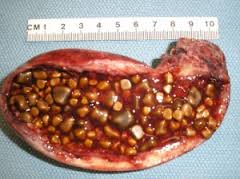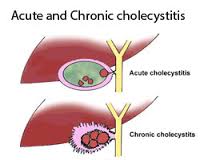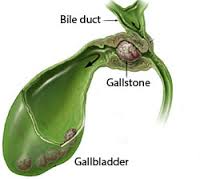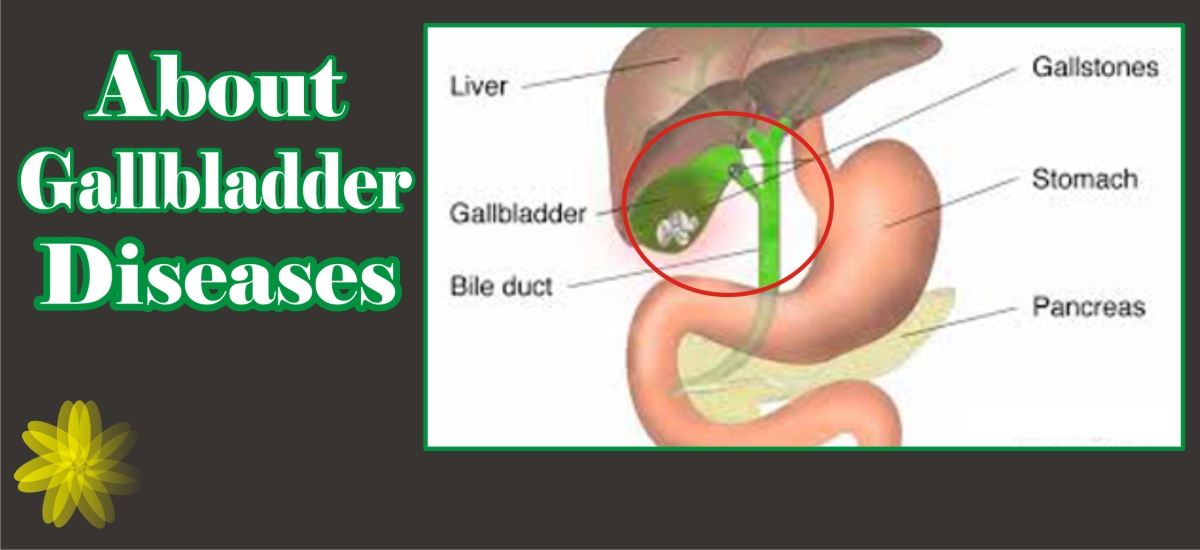Gallbladder disease is a term for several types of conditions that can affect your gallbladder, a small pear shaped sac located under the liver. Your gallbladder’s main function is to store the bile produced in your liver and pass it along to the small intestine.
The majority of gallbladder diseases are caused by inflammation due to irritation to the gallbladder wall (cholecystitis). This occurs when gallstones obstruct the ducts leading to the small intestine and may eventually lead to necrosis or gangrene. Other diseases of the gallbladder include biliary enteric fistulas, sclerosing cholangitis, gallbladder polyps, and gallbladder cancer.
What are the Types of Gallbladder Disease?
- Gallstones

Gall Bladder Stone
Gallstones are the most pressing of all gallbladder diseases. They develop when substances in the bile (such as cholesterol, bile salts, and calcium) form hard particles that block the passageway to the gallbladder.
In addition, stones tend to form when the gallbladder doesn’t empty completely or often enough. They vary in size from as small as a grain of sand to as large as a golf ball.
Numerous factors contribute to your risk of gallstones. These include:
- being overweight or obese
- eating a high-fat or high-cholesterol diet
- having diabetes
- being age 60 or older
- taking medications that contain estrogen
- having a family history of gallstones
- being a women
Cholecystitis
Cholecystitis is the most common type of gallbladder disease. It presents itself as either an acute or chronic inflammation.
Acute Cholecystitis
Acute cholecystitis is generally caused by gallstones, but may also be the result of tumors or various other illnesses. It may present with pain in the upper right side or upper middle part of the abdomen. The pain can come right after a meal and range from sharp pangs to dull aches that may often radiate to the right shoulder. Fever nausea, vomiting,jaundice, and different colored stools are also a result of acute cholecystitis.
Chronic Cholecystitis
After several attacks of acute cholecystitis, the gallbladder will shrink  and lose its function of storing and releasing bile. Abdominal pain, nausea, and vomiting may follow.
and lose its function of storing and releasing bile. Abdominal pain, nausea, and vomiting may follow.
Choledocholithiasis
Gallstones may become lodged in the neck of the gallbladder or in the bile ducts. When the gallbladder is plugged in this way, bile cannot exit. This may lead to the gallbladder becoming inflamed or distended. The plugged bile ducts will further prevent bile from traveling from the liver to the intestines. Choledocholithiasis produces extreme pain in the middle upper abdomen, fever, chills, nausea, and vomiting.
Acalculous Gallbladder Disease
Acalculous gallbladder disease (biliary dyskinesia) occurs without the presence of gallstones. It can be chronic or acute and may result from the gallbladder muscles or valve not working properly. Symptoms include abdominal pain on the right side of the body, radiating to the shoulder. Eating high fat foods often triggers this. Related symptoms may include nausea, vomiting, bloating, and loose stools.
Continue reading “What should be known about Gall Bladder Diseases”



